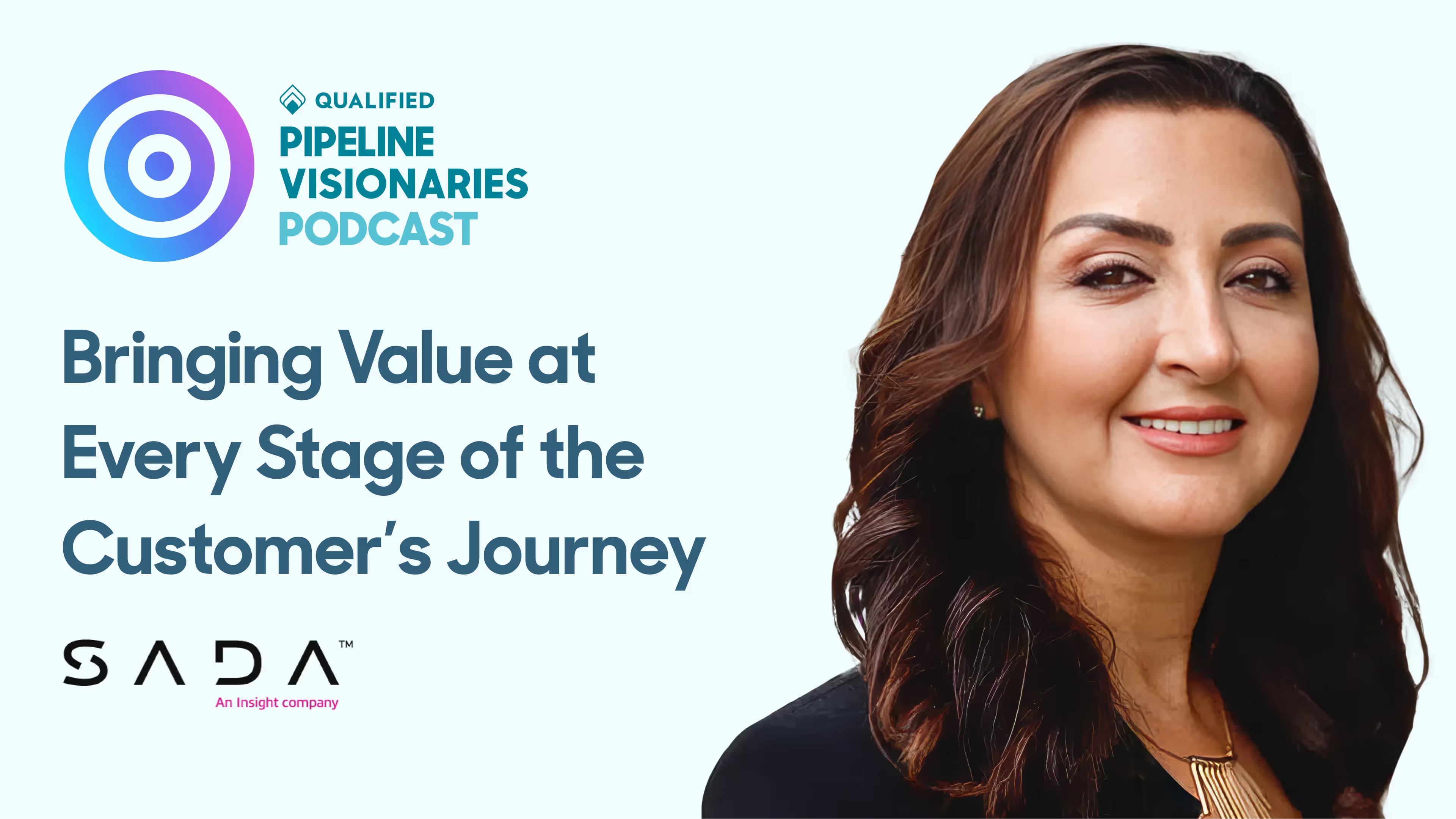Bringing Value at Every Stage of the Customer’s Journey
Narine Galstian, CMO at SADA, shares about getting customers for life and providing value at all stages of the customer journey.




Narine Galstian, CMO at SADA, shares about getting customers for life and providing value at all stages of the customer journey.

This episode features an interview with Narine Galstian, CMO at SADA, an IT Services and Consulting company that helps customers move to the cloud and then innovate and explore what is possible on the cloud.
In this episode, Narine discusses fostering ongoing conversations with customers and focusing on getting customers for life. She also dives into the importance of providing value at each stage of the customer journey and meeting customers where they are.
Key Takeaways:
Stay up to date with weekly drops of fresh B2B marketing and sales content.
Narine Galstian, CMO at SADA, shares about getting customers for life and providing value at all stages of the customer journey.


This episode features an interview with Narine Galstian, CMO at SADA, an IT Services and Consulting company that helps customers move to the cloud and then innovate and explore what is possible on the cloud.
In this episode, Narine discusses fostering ongoing conversations with customers and focusing on getting customers for life. She also dives into the importance of providing value at each stage of the customer journey and meeting customers where they are.
Key Takeaways:
Stay up to date with weekly drops of fresh B2B marketing and sales content.
Narine Galstian, CMO at SADA, shares about getting customers for life and providing value at all stages of the customer journey.


This episode features an interview with Narine Galstian, CMO at SADA, an IT Services and Consulting company that helps customers move to the cloud and then innovate and explore what is possible on the cloud.
In this episode, Narine discusses fostering ongoing conversations with customers and focusing on getting customers for life. She also dives into the importance of providing value at each stage of the customer journey and meeting customers where they are.
Key Takeaways:
Stay up to date with weekly drops of fresh B2B marketing and sales content.
Narine Galstian, CMO at SADA, shares about getting customers for life and providing value at all stages of the customer journey.



This episode features an interview with Narine Galstian, CMO at SADA, an IT Services and Consulting company that helps customers move to the cloud and then innovate and explore what is possible on the cloud.
In this episode, Narine discusses fostering ongoing conversations with customers and focusing on getting customers for life. She also dives into the importance of providing value at each stage of the customer journey and meeting customers where they are.
Key Takeaways:
Discover how we can help you convert more prospects into pipeline–right from your website.